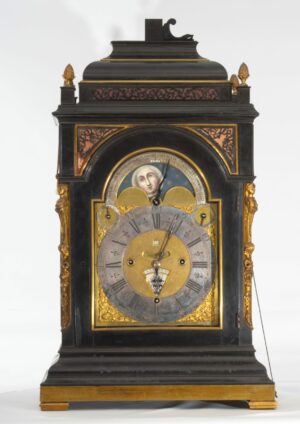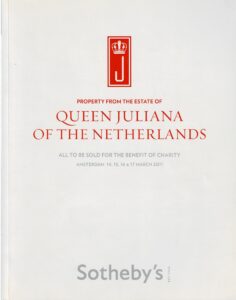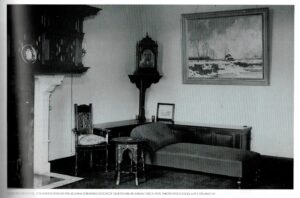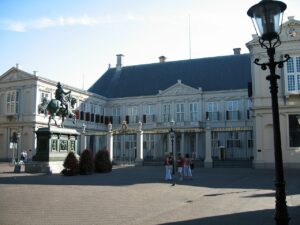The Queen’s clock.

A large and rare Dutch musical table clock from the Dutch Royal collection.

Collection of Queen Juliana
Gude & Meis recently acquired a Dutch table clock which was sold at Sotheby’s Amsterdam in March 2011. The sale consisted of art and objects from the collection of Queen Juliana of The Netherlands. We thought that it would be interesting to share the history, characteristics and restoration of this clock with you in a series of short articles.
The History
Royal provenance
It is often very difficult to find information on the origin or provenance of objects. This is certainly the case with clocks. For example paintings can be sometimes identified by their signature and subject. But the descriptions of clocks in archives and other old documents are often very limited making it hard to identify an actual clock.

We know for sure that this clock has a Royal provenance since it was sold in the above mentioned sale at Sotheby’s Amsterdam. But two historical pictures showing the actual clock in an interior give us more interesting information. For instance proving where the clock was in earlier days. This photo which was in the Sotheby’s catalog, shows the drawing room of Queen Wilhelmina at Paleis Noordeinde around 1930. In it we see the clock positioned in the corner on top of a pedestal. (photo; PHOTO POLYGOON, Sotheby’s catalog AM1100 lot 138, page 73)
Paleis Noordeinde

The building at the time was made available to Louise de Colligny the widow of William of Orange, for her to live there with her sons. From then on there is a Royal connection with this building. In 1640 a major reconstruction was done to a design of Jacob van Campen who was also responsible for the designs of the Royal Palace in Amsterdam and the city hall of Maastricht. After the reign of King-stadtholder Willem III early 18th Century this period of ‘The Old Court’ ends. In 1795 the palace was acquired by the Dutch State. In 1813 it was made available to Willem I who used it as a wintepalace. Until the start of the Second World War it remained a Royal Residence. Having had a different destination for about four decades, the Palace became the ‘Work-Palace’ of Queen Beatrix in 1984. It remains having the function of ‘Work-Palace’ of the sovereign until this day.
(source; information and picture Wikipedia) https://nl.wikipedia.org/wiki/Paleis_Noordeinde
Juliana en Wilhelmina
With certainty we can state that the clock once belonged to Juliana Queen of the Netherlands because of the sale. But because of this picture we also know that the clock was in the residence of Queen Wilhelmina. And because of this we can assume with some certainty that this clock therefore also previously belonged to Queen Wilhelmina of the Netherlands. We can also assume that this clock was at the Palace Noordeinde at least until the start of Second World War. In the following posts we will reveal more details about the history and other aspects of this important clock.

